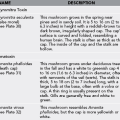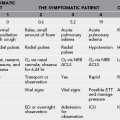Frostbite and Other Cold-Induced Tissue Injuries
Frostbite
Field Treatment
Strategies for field treatment are dictated largely by the presence of one of two scenarios:
Scenario 1: The frostbitten tissue has the potential to refreeze and will not be actively rewarmed.
Scenario 2: The frostbitten part can be rewarmed and kept thawed with minimal risk for refreezing until arrival at definitive care.
For Both Scenarios
1. Protect the patient from the environment, and provide appropriate shelter.
2. Treat systemic hypothermia (see Chapter 3).
3. Transfer or evacuation arrangements must protect the patient from cold exposure.
4. Frostbitten tissue should be protected from further freezing or additional trauma. Do not rub or apply ice or snow to the affected area. Remove jewelry or constrictive clothing. Replace constrictive and wet clothing with dry, loose wraps or garments, anticipating substantial edema.
5. Treat dehydration and maintain hydration. Vascular stasis that accompanies frostbite is worsened by dehydration.
6. Oral ibuprofen blocks or decreases production of inflammatory mediators that lead to vasoconstriction and dermal ischemia. Administer 12 mg/kg/day (up to 2400 mg/day if also used as an analgesic). To minimize local trauma, apply bulky, clean, and dry gauze or sterile cotton dressings to frostbitten tissue, taking care to pad between affected toes and fingers.
7. If it is necessary to walk on a frostbitten foot in order to evacuate, this may cause more trauma. If it is possible for the patient to be carried or evacuated without having him or her walk on frostbitten feet, this is optimal. If the patient is carried, keep injured extremities elevated to minimize swelling.
8. Prohibit the use of tobacco products.
9. Antibiotics, anticoagulants, and vasodilators are not indicated for field treatment of frostbite.
Additional Treatment in Scenario 2
1. Field rewarming in a warm (37° to 39° C [98.6° to 102.2° F]) water bath should be performed if definitive care is more than 2 hours away and the tissue can be kept thawed in transit. If water temperature cannot be measured by thermometer, use an uninjured hand to judge warmth by keeping it immersed in the warmed water for at least 30 seconds to confirm that the water will not scald. Circulate water around the frozen tissue, and add warm water as needed to maintain the proper temperature. Rewarming is usually accomplished within 30 minutes. Air dry or gently blot dry the injured tissue.
2. Give analgesic medications (ibuprofen at the dosing indicated earlier and/or opiate narcotics) to control pain associated with rewarming.
3. If active rewarming is not indicated or possible, spontaneous thawing should be allowed.
4. Tense, clear fluid-filled blisters at risk for rupture during an evacuation may be aspirated and dry gauze dressing applied to minimize infection. Hemorrhagic bullae should not be aspirated or debrided electively in the field.
5. Aloe vera lotion or gel improves frostbite outcome by (weakly) reducing inflammatory mediators and if available should be applied to thawed tissue before applying dressings.
6. Supplemental oxygen (if available) should be administered if the patient is hypoxic (oxygen saturation <90%) or at high altitude above 4000 m (13,123 ft). It is otherwise not indicated solely for the treatment of frostbite.
Evacuation Timing and Destination Concerns
1. Angiography performed within 24 hours of deep frostbite injury that reveals no perfusion may guide thrombolytic treatment in selected cases.
2. Thrombolysis and iloprost infusions have shown promise in recent studies of deep frostbite injury, but they should be used only in advanced care facilities and guided by imaging.
3. Be aware that thrombolytic and iloprost therapies should be initiated within 24 hours of deep injury, so prompt evacuation of persons with deep injuries is optimal.
4. Radioisotope scanning or other diagnostic modalities may be used to aid prognosis at 2 to 3 weeks following injury. Magnetic resonance angiography or triple-phase bone scan performed at day 2 has been used to provide insight into prognosis and guide early surgery.
Prevention
1. Maintain adequate systemic hydration.
2. Wear properly fitted, nonconstrictive dry clothing, particularly footgear.
b. Keep mittens, gloves, and footgear dry.
c. Wear mittens in preference to gloves.
3. Do not handle cold liquids or metals. (NOTE: Fuel and metal cameras are common culprits.)
5. Avoid fatigue and sleep loss.
6. Maintain oxygenation, using supplemental oxygen at extreme altitude.
7. Do not overwash skin; allow natural oils to accumulate.
8. Wind and high altitude greatly increase risk.
9. Avoid ingested alcohol and inhaled tobacco.
10. Persons with preexisting Raynaud’s phenomenon or prior cold injury should exercise special caution.
11. Physical activity (providing severe fatigue can be prevented) will raise core and peripheral temperatures and can prevent frostbite.
12. Chemical or electric warmers may be used to maintain peripheral warmth. (NOTE: Warmers should be close to body temperature before being activated.)
13. Perform buddy “cold checks.” If extremity numbness develops, apply warmth to the axillae and groins, and attempt to transfer adjacent body heat from a companion.
14. Minimize cold exposure, particularly at environmental temperatures below −15° C (5° F) (even with low wind speeds).
Many of the recommendations for prevention and treatment of frostbite were taken from consensus guidelines published by the Wilderness Medical Society (http://www.wemjournal.org/article/S1080-6032%2811%2900077-9/fulltext).
Trench Foot (Immersion Foot)
Overview
1. Injury occurs when tissue is exposed to cold and wet conditions at temperatures ranging from 0° to 15° C (32° to 59° F).
2. Injury may extend proximally and involve the knees, thighs, and buttocks.
Signs and Symptoms
1. Red skin that becomes pale and extremely edematous
2. Early numbness, painful paresthesias
4. During the first few hours to days: limb hyperemia with swelling and then diffuse discoloration, mottling, and numbness
5. Delayed capillary refill or petechial hemorrhages possible
6. After 2 to 7 days: hyperemia predominant, with regional skin temperature variation, edema, blisters, and ulceration
7. After 7 days: nature of the pain changes to “shooting or stabbing”
8. Sensory deficits may diminish, but paresthesias continue; anesthesia may remain extensive






